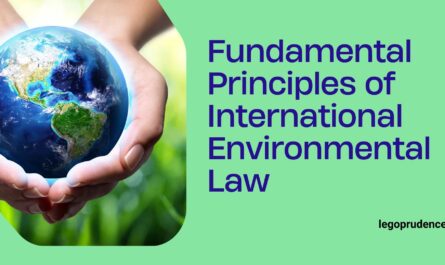Introduction to the 1972 Stockholm Conference on the Human Environment
The 1972 United Nations Conference on the Human Environment, held in Stockholm, Sweden, marked a pivotal moment in global environmental governance. Recognized as the first world conference to elevate environmental issues to the forefront of international discourse, the conference brought together representatives from 113 countries, as well as various international organizations and non-governmental entities.
The primary objective of the conference was to address the urgent need for coordinated action in response to the growing environmental challenges posed by industrialization, urbanization, and population growth. Participants engaged in fruitful dialogue, culminating in the adoption of the Stockholm Declaration, which outlined 26 principles aimed at fostering sustainable development and promoting environmental stewardship.
Additionally, the conference produced an Action Plan encompassing three key categories: the Global Environmental Assessment Programme, environmental management activities, and international measures to support these efforts at both national and international levels. This comprehensive framework included a total of 109 recommendations, setting a foundation for future environmental policies and cooperation.
A significant outcome of the Stockholm Conference was the establishment of the United Nations Environment Programme (UNEP), which continues to play a crucial role in promoting global environmental awareness and action. The legacy of this historic event not only reshaped the environmental landscape but also initiated an ongoing dialogue between industrialized and developing nations on the interconnectedness of economic growth, environmental health, and human well-being
Objectives of Stokholm Conference 1972
Main Objectives of the 1972 Stockholm Conference on the Human Environment
The 1972 Stockholm Conference on the Human Environment aimed to address critical environmental challenges through international cooperation and dialogue. The primary objectives included:
- Establishing a Common Governance Framework:
- Create a unified structure for managing the planet’s environment and natural resources, facilitating international collaboration on environmental issues.
- Promoting International Cooperation:
- Encourage developed and developing countries to work together to address environmental challenges, recognizing the interconnectedness of development, poverty, and environmental health.
- Identifying Key Environmental Issues:
- Focus on critical themes such as:
- Planning and management of human settlements with an emphasis on environmental quality.
- Educational and cultural dimensions related to environmental issues.
- Sustainable management of natural resources and their relationship with the environment.
- Addressing the definition and control of significant pollutants on a global scale.
- Examining institutional implications of proposed actions at the international level.
- Focus on critical themes such as:
- Developing Actionable Recommendations:
- Approve a set of 109 recommendations aimed at facilitating effective action on environmental concerns at both national and international levels.
- Adopting the Stockholm Declaration:
- Formulate and adopt the Stockholm Declaration, which included 26 principles that laid the groundwork for future international environmental policy and emphasized the need for mutual respect in environmental governance.
- Establishing the United Nations Environment Programme (UNEP):
- Create an international body to promote cooperation among nations and coordinate efforts to assess and manage environmental issues globally.
These objectives collectively sought to foster a holistic approach to environmental management, recognizing the urgent need for action to protect the planet for current and future generations.
Principles of Stockholm Declaration 1972
The 26 principles adopted at the Stockholm Conference in 1972 are often referred to as the “Magna Carta on the Human Environment.” This comparison highlights the significance and foundational nature of these principles in shaping international environmental law and policy. Here are the 26 principles of the Stockholm Declaration, adopted at the United Nations Conference on the Human Environment in 1972
Human Centric (Principles 1 and 15)
Principle 1: Fundamental Rights– Man has the fundamental right to freedom, equality, and adequate living conditions in an environment that allows for dignity and well-being, and he bears a responsibility to protect and improve the environment for current and future generations.
Principle 15: Planning for Human Settlements– Planning must consider the environmental impacts of human settlements and urbanization to maximize benefits for all.
Sustainable Development (Principles 2,3,4,5,13 and 14)
Principle 2: Safeguarding Natural Resources- The natural resources of the earth must be safeguarded for the benefit of present and future generations through careful planning and management.
Principle 3: Maintaining Renewable Resources- The capacity of the earth to produce vital renewable resources must be maintained and, wherever practicable, restored or improved.
Principle 4: Wildlife and Habitat Conservation– Man has a special responsibility to safeguard and manage the heritage of wildlife and its habitats, which are currently under threat.
Principle 5: Use of Non-Renewable Resources– The non-renewable resources of the earth must be used cautiously to prevent their exhaustion, ensuring that benefits are shared equitably among all mankind.
Principle 13: Integrated Resource Management- States should adopt an integrated approach to development planning to ensure compatibility with environmental protection.
Principle 14: Rational Planning- Rational planning is essential for reconciling development needs with environmental protection.
Reflection on customary international law position (Principle 21)
Principle 21: Sovereign Rights and Environmental Responsibility– States have the sovereign right to exploit their resources while ensuring their activities do not harm the environment of other states.
Preventive actions (Principle 6,7,8 and 18)
Principle 6: Halting Toxic Discharges– The discharge of toxic substances and heat that exceed the environment’s capacity to neutralize them must be stopped to prevent serious damage to ecosystems.
Principle 7: Preventing Marine Pollution– States must take steps to prevent pollution of the seas by hazardous substances that could harm human health and marine life.
Principle 8: Economic and Social Development– Economic and social development is essential for creating a favorable living and working environment and improving quality of life.
Principle 18: Application of Science and Technology– Science and technology should be applied to identify and solve environmental problems for the common good.
Compensation on victims (Principle 22)
Principle 22: International Law on Environmental Liability– States should cooperate to develop international law regarding liability and compensation for environmental damage.
Cooperation (Principles 24 and 25)
Principle 24: Cooperative International Approach– Environmental protection should be handled cooperatively by all countries, regardless of size, to effectively address adverse effects.
Principle 25: Role of International Organizations– States should ensure that international organizations play a coordinated and dynamic role in environmental protection.
Policies & agendas and Education & Scientific Research (Principles 11, 12, 16, 19, 20 and 23)
Principle 11: Enhancing Development Potential– Environmental policies should enhance, not hinder, the development potential of developing countries and improve living conditions for all.
Principle 12: Resource Allocation for Environmental Preservation– Resources should be allocated to preserve and improve the environment, taking into account the specific needs of developing countries.
Principle 16: Demographic Policies– Demographic policies should respect human rights and be applied in regions where population growth may negatively impact the environment.
Principle 19: Environmental Education– Education on environmental matters is essential for fostering responsible behavior in protecting the environment.
Principle 20: Support for Scientific Research- Scientific research and development related to environmental issues must be promoted, especially in developing countries.
Principle 23: Contextual Consideration of Standards– Environmental standards should consider the values and circumstances of each country, especially for developing nations.
Other Principles
Principle 9: Addressing Environmental Deficiencies– Environmental issues arising from under-development and natural disasters can be remedied through accelerated development and the transfer of financial and technological assistance.
Principle 10: Stability for Developing Countries– Price stability and adequate earnings for primary commodities are essential for environmental management in developing countries.
Principle 17: National Institutions for Environmental Management– Appropriate national institutions must be responsible for planning and managing environmental resources to enhance quality.
Principle 26: Elimination of Mass Destruction Weapons– Man and the environment must be protected from the effects of nuclear weapons and other means of mass destruction; states must work towards their elimination.
Impact of the Stockholm Conference in 1972
The impact of the Stockholm Conference in 1972 was significant and far-reaching, setting the stage for international cooperation on environmental issues. Here are some of the key impacts of the conference:
- Elevated Environmental Issues: The Stockholm Conference brought global attention to environmental challenges, pushing them to the forefront of international policy discussions and fostering a global consciousness about the interconnectedness of environmental problems.
- Established Fundamental Principles: The Stockholm Declaration outlined foundational principles of international environmental law, influencing subsequent agreements and shaping national environmental policies towards sustainable development.
- Creation of UNEP: The establishment of the United Nations Environment Programme (UNEP) was a major outcome, facilitating global environmental cooperation and playing a crucial role in developing and implementing environmental treaties.
- Promoted International Cooperation: Encouraged states to work together in addressing environmental challenges across borders, leading to the creation of multilateral environmental agreements and collaboration between developed and developing nations.
- Integrated Environment and Development: Linked environmental protection with economic development, laying the groundwork for sustainable development concepts later elaborated in subsequent reports and summits.
- Encouraged National Environmental Policies: Encouraged countries to develop their own environmental policies and legislation, strengthening national governance frameworks and promoting tools like environmental impact assessments.
- Fostered Public Participation: Emphasized public awareness and participation in environmental decision-making, empowering NGOs and civil society to advocate for environmental issues and influencing policy-making.
- Paved the Way for Other Conventions: The Stockholm Conference paved the way for other international conventions on environmental preservation and influenced the enactment of environmental laws in various countries, such as India’s Air and Water Acts, to align with its principles.
Conclusion
In conclusion, the Stockholm Conference of 1972 stands as a pivotal moment in history, marking the first significant international effort to address environmental issues on a global scale. The conference not only raised awareness about environmental challenges but also laid the foundation for modern international environmental governance.
Through the establishment of fundamental principles, the creation of the United Nations Environment Programme (UNEP), and the promotion of international cooperation, the Stockholm Conference set in motion a series of events that have shaped environmental policies and practices for decades to come.
By integrating environmental concerns with development goals, fostering public participation, and encouraging the adoption of national environmental policies, the conference catalyzed a shift towards a more sustainable approach to environmental management.
The legacy of the Stockholm Conference lives on in the numerous environmental agreements, initiatives, and policies that have since been developed to address pressing environmental issues. It serves as a reminder of the importance of global cooperation and collective action in safeguarding our planet for future generations.



